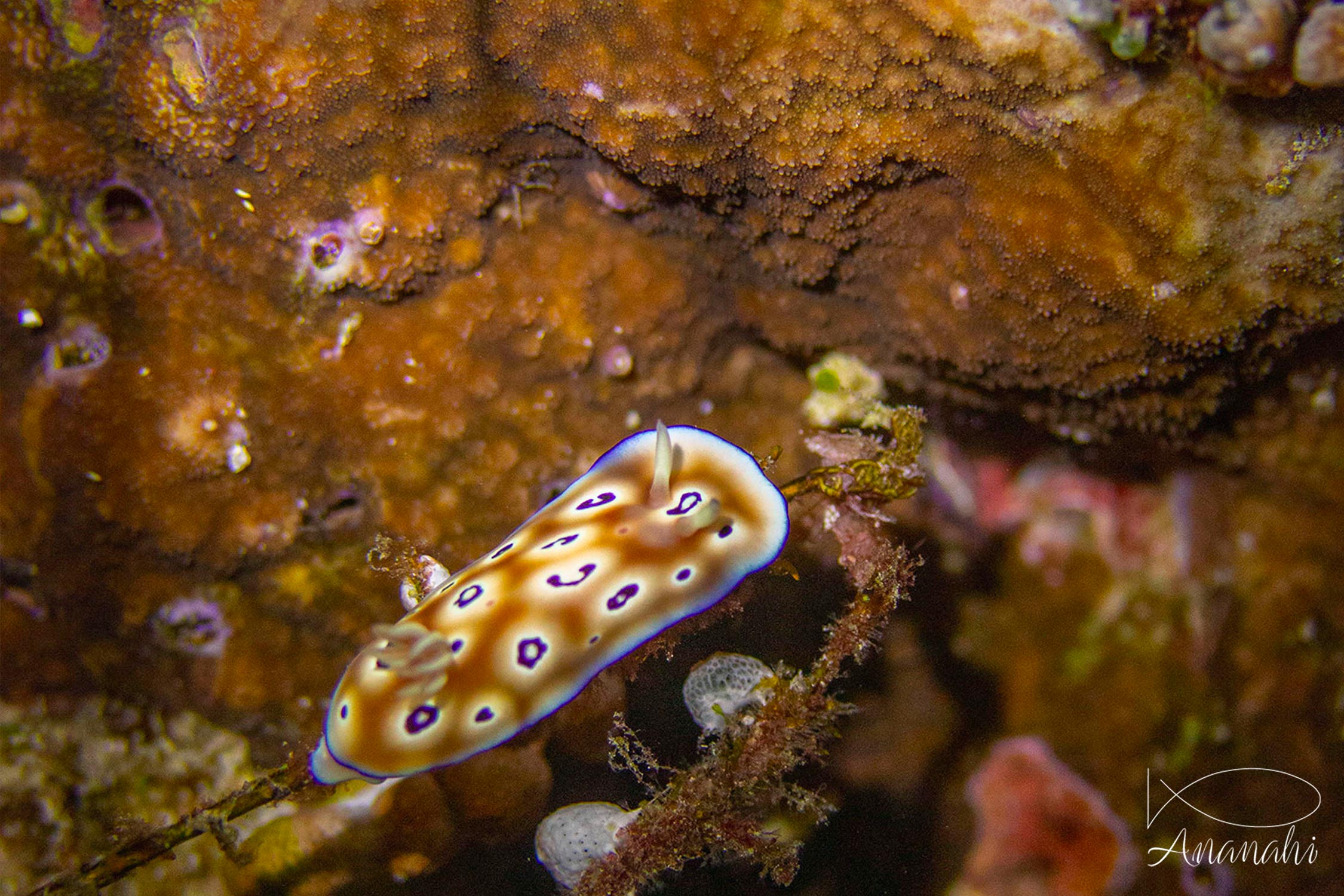
Scientific name: Goniobranchus leopardus
Size: Up to 2.6 inches
Color: Yellowish or reddish brown, white and dark blue
Distinguishing feature: Dark blue border around the mantle. Ocelluses complete or non-violets, surrounded by white, on the brown mantle.
Where did we see it: Bali and Gili, Thailand, Raja Ampat

Scientific name: Goniobranchus leopardus
Size: Up to 2.6 inches
Color: Yellowish or reddish brown, white and dark blue
Distinguishing feature: Dark blue border around the mantle. Ocelluses complete or non-violets, surrounded by white, on the brown mantle.
Where did we see it: Bali and Gili, Thailand, Raja Ampat
This species lowers and raises its skirt when moving, sometimes even when stopped.
It feeds on silicious sponges.
This nudibranch can be easily confused with others of the same family, even with the flat leopard worm to which it looks a lot! To differentiate them, you have to look at the borders of the coat, which can be different in number and color and check that it has rhinophores (antennae) and gills.

















The whale shark is the largest fish in the world!
Some whales are larger, but they are mammals, not fish!
Some sharks can stay motionless on the sand (white tips reef sharks, nurse sharks, etc.).
These sharks don't have to swim to bring oxygen to their gills like other sharks (grey, hammerheads tc.)
Turtles are in economy mode when they are sleeping. If they are woken during night, they may not have enough air to return to surface.
So, please be careful during night dives!